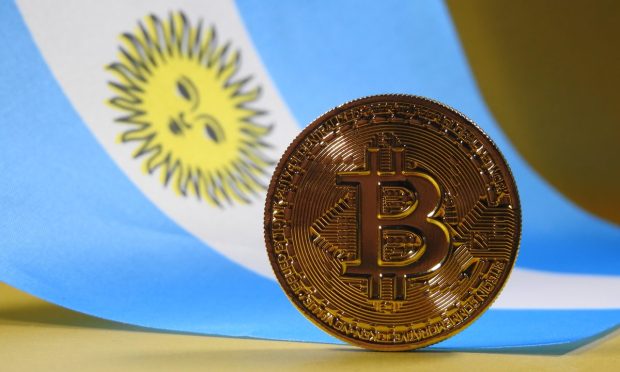In $44B Argentine Debt Deal, IMF Shows Growing Willingness to Coerce Anti-Crypto Policies

Buried in the text of the deal the Argentine Senate’s approved on March 18 to refinance its $44 billion debt to the International Monetary Fund and avoid a default was a one-line provision that seems to signal a broader effort to discourage the use of cryptocurrencies as a form of payment.
The “strengthening financial resilience” section of the 34-page letter of intent ratified today reads “To further safeguard financial stability, we are taking important steps to (i) discourage the use of crypto-currencies with a view to preventing money laundering, informality and disintermediation.”
The line, on page 19, is notable for two reasons. First, it should be viewed in the context of the IMF’s fight with El Salvador over its unpopular-from-the-start decision to make Bitcoin a legal tender alongside the U.S. dollar — a pet policy of President Nayib Bukele that is believed to be holding up an urgent, $1.3 billion loan needed to avoid a debt default early next year.
See also: IMF’s Silence Signals El Salvador Needs to Abandon Bitcoin to Secure $1.3B Loan
Second, it comes in the context of a rapid increase in the use of cryptocurrencies in the hyperinflation-wracked country over the past year — most notably dollar-pegged stablecoins, but also bitcoin and ether.
Turning to stablecoins
An Argentinian worker paid $1,000 through the traditional banking system would receive 109,000 pesos at the official exchange rate, but 200,000 pesos if paid in crypto, according to a March 10 article by BNN Bloomberg that called cryptocurrencies “a lifeline in Argentina’s chaotic economy.”
It cited a local crypto exchange saying that there has been a 340% increase in the number of companies paying employees in crypto over the past 12 months.
The article also said that according to Deel, a three-year-old, global remote hiring and payroll company, a higher proportion of Argentine employees are getting paid in crypto than in any of the 150 countries in which it operates. Deel began allowing clients to pay employees using the USDC stablecoin this year, TechCruch reported last month.
The growing acceptance of crypto in Argentina is also backed up by blockchain intelligence firm Chainalysis’ 2021 Global Crypto Adoption Index, which places the country at No. 10.
Beyond that, stablecoin purchases are growing “sharply” in the broader Latin American market, according to Daniel Vogel, the CEO of Mexican cryptocurrency exchange Bitso, which reports having two million customers. Speaking to CoinDesk, he added that MakerDAO’s DAI and Circle’s USD Coin (USDC) are the most in-demand stablecoins.
Digital yes, crypto no
The IMF has dug its heels in with the Salvadoran government to the point where both Moody’s and Fitch have pushed the Central America country’s bond ratings well below junk status in the past six months.
Read further: Weeks Before Bitcoin Bond Launch, Fitch Slashes El Salvador’s Credit Rating
In July, an IMF blog posting called El Salvador’s move to make bitcoin a national currency “a step too far,” arguing that it is “a shortcut” to building better and safer digital forms of money that “have the potential to provide cheaper and faster payments, enhance financial inclusion, improve resilience and competition among payment providers, and facilitate cross-border transfers.”
It’s worth noting that in the same three-clause sentence in which Argentina promised the IMF it would discourage cryptocurrency use, it promised to encourage the use of other digital payment technologies, saying it is taking steps to “further support the current process of digitization of payments to improve the efficiency and costs of payments systems and cash management.”
The sentence ended with Argentina pledging to “safeguard financial consumer protection” — another dig at bitcoin and other cryptocurrencies.
